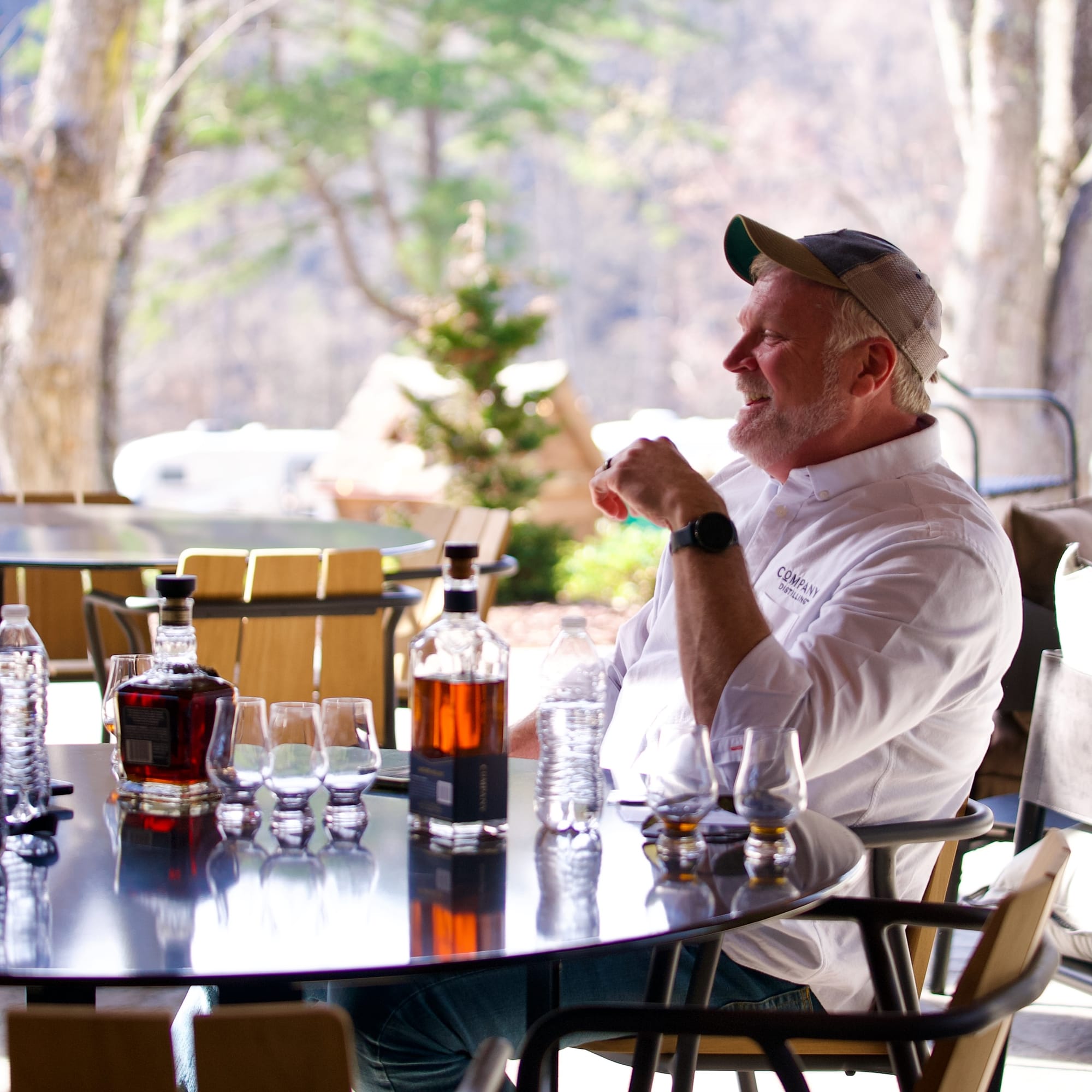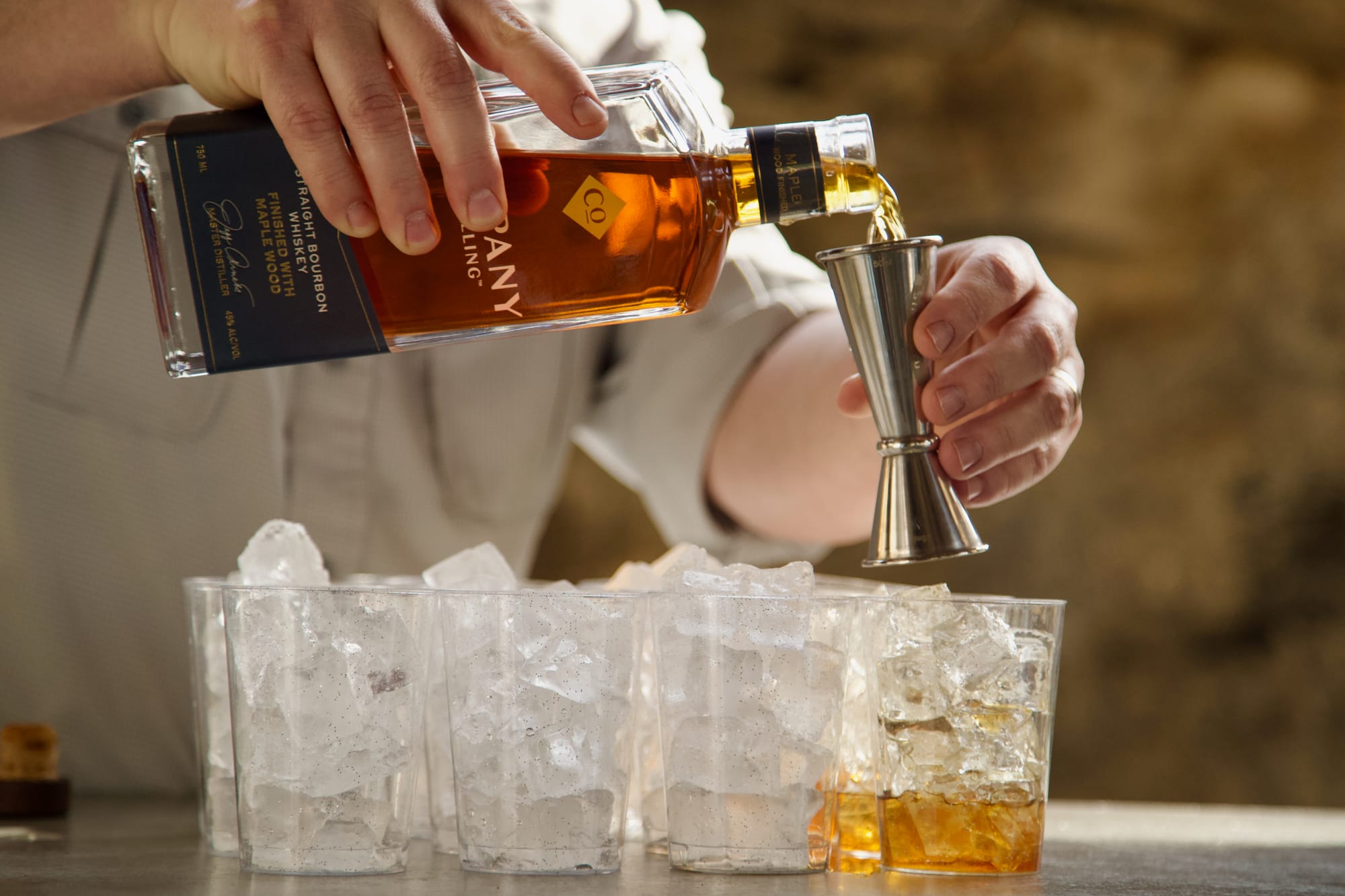Jeff Arnett To Innovate with Finished Whiskeys at Company Distilling
Contrary to what some have suspected, Jeff Arnett didn’t leave because he disliked the master distiller’s post at Jack Daniel’s. Even after 12 years in the high-stress role as the person in charge of whiskey making at the world’s most prodigious whiskey plant.

Let’s just cut to the chase about Jeff Arnett’s story. He left Jack Daniel’s for three simple reasons.
- To become a whiskey entrepreneur with a small group of business friends.
- To distill mashbills of his creation.
- And to give maple wood a second chance. (More on that later.)
Contrary to what some have suspected, he didn’t leave because he disliked the master distiller’s post at Jack Daniel’s. Even after 12 years in the high-stress role as the person in charge of whiskey making at the world’s most prodigious whiskey plant—and the brand that accounts for about 80 percent of Brown-Forman’s $3.75 billion annual revenue—he enjoyed the job. Even better, he loved the brand and the whole production team. He called those people’s dedication to Jack “unmatched in my experience.”
“I was in my 50s and I wasn’t getting any younger, and I trusted myself to do something independently...”JEFF ARNETT
He wasn’t as crazy about JD’s fruit-accented Tennessee whiskeys (more on that later also), but they weren’t worth quitting over. Battles between marketing teams and production teams … dreadful also, but par for the course when working for a behemoth brand shipping whiskey to 170 out of 195 of the world’s countries.
“I was in my 50s and I wasn’t getting any younger, and I trusted myself to do something independently,” Arnett said. “I started talking to some guys I knew from the (Tennessee Distillers) Guild about branching out with our own brand, and it just started coming together.”

Those guys are now his partners in Company Distilling, which was formed in 2020 and headquartered in Townsend, Tenn. His partners bring a mixed bag of skills to the team: legal, whiskey making and real estate development. The group includes Heath Clark (a lawyer and founder of H. Clark Distillery, now converted to Company’s first outpost in Thompson Station, Tenn.), Kris Tatum (co-founder of [though no longer with] Old Forge Distillery and past president of the Tennessee Distiller's Guild) construction veteran, Corey Clayton, and Kevin Clayton, CEO of Clayton Homes, one of the nation’s largest homebuilders.
That the men liked each other so well led to the business’s name.
“We enjoyed each other’s company,” Arnett said. “My mom used to say things like, ‘Take a shower and fix your hair. We’ve got company coming over.’ It’s hospitality we think of in that name, that our whiskey would be something you’d share when company comes over.”
Company bourbon, however, is a bit more complicated. Without a distillery, Arnett set out to source stocks from others, blend them and accent the liquid with maple wood. Why maple? A limited Jack Daniel’s release he created, No. 27 Gold, was aged in oak and then finished in maple casks. He loved it and, according to him, it’s one of the most popular bottles on JD’s tour after visitors taste it. But while maple wood coopers well, it leaks worse than President Trump’s cabinet.
“It's not a high-integrity liquid container,” said Arnett. “In six months, you’d lose the same amount of liquid you’d lose if it was stored five or six years in oak,” which is why the 80-proof bottle costs about $100.
Believing product and process could be improved, Arnett set out to source wheated bourbon that he’d finish with maple wood pieces added to the original barrels, and then bottle the whiskey at 90 proof. Problem was, there isn’t much wheated bourbon available for resale these days, not even for the venerable Jeff Arnett.

“In my ideal world, everything I need would be at my disposal and very affordable,” he said sarcastically. Adding while grinning, “But I’m finding out that is not the case. … That required us to go to three states to find (wheated bourbon): Two made on column stills, and one from a pot still, for mouthfeel.”
He wanted wheated bourbon to “control the cereal-to-sweet character, and maple to make it balanced and approachable,” he said. Wood finishing will factor prominently in most future Company whiskeys. “I’ve used the word ‘sessionable’ to describe this one.”
It is, to be sure, an approachable and easy drinker.
AND, SO, THE BUILDING BEGINS
When the Bourbon & Banter team visited Townsend, Tenn., in March, construction of Company’s new tourism distillery was about halfway toward its expected late May completion. (Click here to read the story.) Using a shared brewing and distilling system, Company will make a line of craft beers and whiskeys there, serve cocktails and catered food and offer outdoor entertainment on the grassy seven-acre campus.
“I’ve seen the value of them (flavored spirits), and I do want to offer them...But I want them to be separate from Company.”JEFF ARNETT
Its workhorse distillery will be located in Alcoa, Tenn., about 30 minutes away. There, in an abandoned factory Arnett calls “a diamond in the rough, a place you have to have a vision for,” a 24-inch column still will make spirits on wash (fermented beer strained of its grain solids) to better control flavor, Arnett said.
“If you have any residual proteins left in the still, those are not contributing good flavors or character,” he said. “You can scorch any grains that are left behind.”
Using 8,000-gallon fermenters and 1,000-gallon beer vats, the 30-barrel system will produce about 10,000 barrels annually. The setup in Townsend is a three-barrel system.

The Alcoa plant, expected to open in 2023, also will be designed for tourism. Its grounds (a plant-dense greenspace that’s near a creek and fitness trails) contain multiple mature trees that will remain to create a park-like setting. Arnett said the drive into Lynchburg on route to Jack Daniel’s “is really beautiful, and I got a lot of ideas from that.”
He’s gotten other ideas from Jack Daniel’s, such as flavored spirits, despite disliking making them. What he couldn’t deny was the success of Jack Daniel’s Honey, Apple and others, which drove sales via new customer attraction.
“I’ve seen the value of them (flavored spirits), and I do want to offer them” to attract drinkers who don’t like whiskey, he said. “But I want them to be separate from Company.”
Arnett believes that the danger of producing flavored spirits using a distillery’s core brand is the risk of confusing customers and diluting hard-earned brand value.
“I don’t want to pollute the waters around Company,” he said. “I want Company to be known as premium bourbon and Tennessee whiskey brand. That’s it.”

